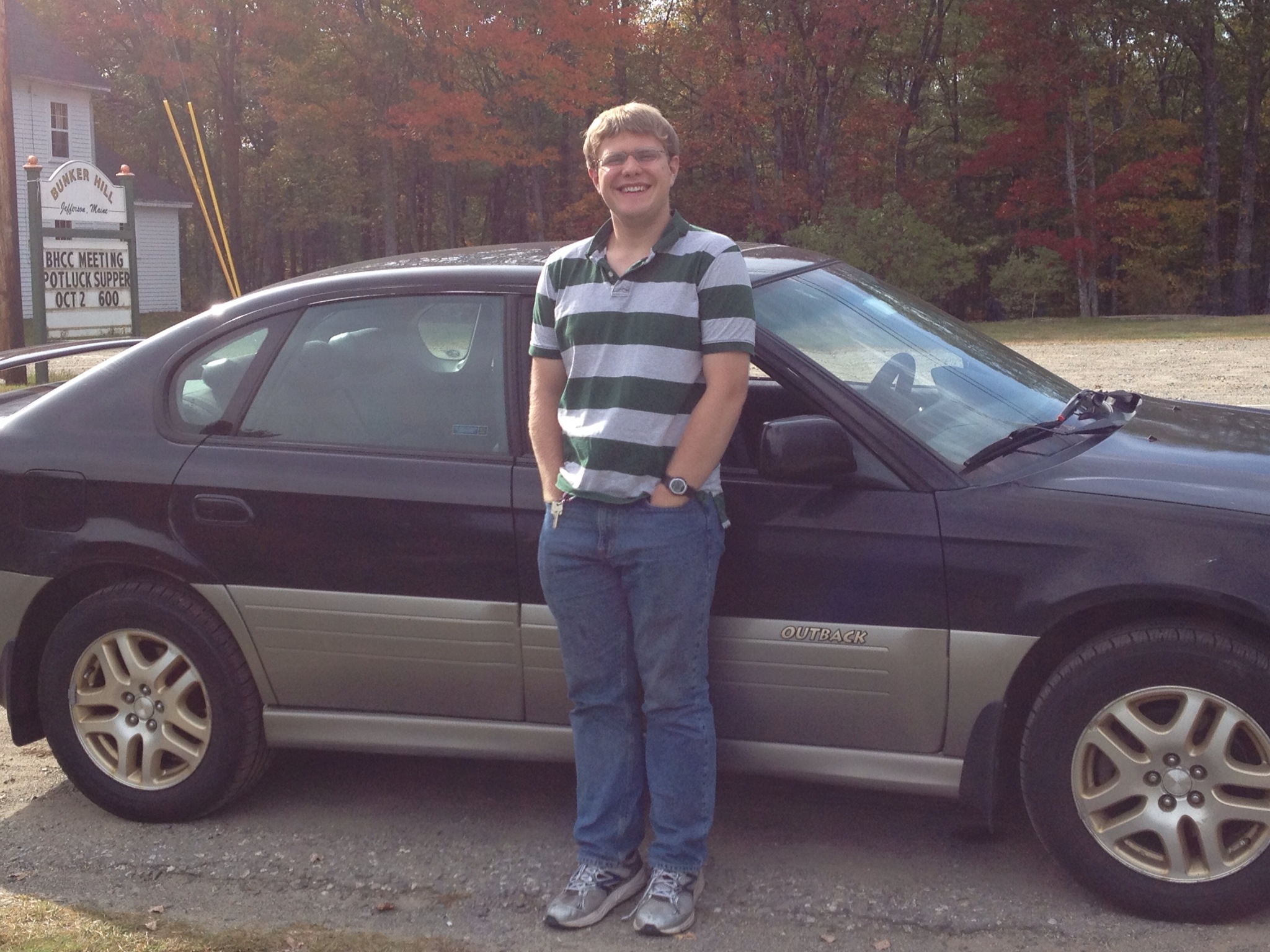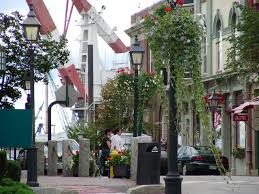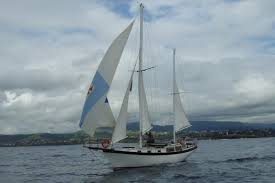including federal, Greek revival and Italianate structures, many topped by low-fenced “widow’s walks” from where it is said wives kept lookout for their seagoing husbands sailing home up the Kennebec from increasing domestic and international trade.
Although Bath is a perfect supply port for the adventurous modern day sailor, it is 5 miles up the Kennebec River, the mouth of which can be nasty for small vessels under many conditions, such as when the wind opposes the tide. For that reason many of today’s sailors continue east to the mouth of the Sheepscot, which is wide and well marked, and then up river to the little village of Robinhood, on the island of Georgetown. In Robinhood one can replenish fuel, tend to marine repairs, enjoy a good meal, and borrow the courtesy car for a seven mile drive back to Bath for other provisions. Nestled among quiet coves and granite islands of pointy pines, overflown by osprey and patrolled by seals, Robinhood is as enchanting as its name.
I share this with you because a place as beautiful as Bath and its environs deserves to be shared; but if I’m honest, it is as much to remind myself that no young couple navigating their adventures and building their lives plans to have a child (or two) who has autism.
Young, I suppose, is a relative term. Steve and I had been married for 12 years, the bulk of that time sailing aboard our 38’ Downeaster ketch, Arabella. Lest you conclude we are trust fund babies with nothing better to do, let me point out that was not and (alas) is not the case. Rather, we were idealists who loved the sea, and were motivated by the challenges of self-sufficiency and seamanship. We bought Arabella before our marriage the way other couples launch their futures by buying a home. While my peers received place settings, linens and appliances as wedding gifts, our guests pooled their money and helped us buy a life raft. We lived on the boat. We were frugal and worked hard, so that over 5 years we were able to pay off the $65,000 Arabella had cost, and accumulate some savings. Unencumbered by mortgages, competent as licensed captains, experienced along the tricky coast of New England, we pursued our dream to go where the wind would take us.
Years passed, and while the adventure remained exciting, something was missing for me. I was haunted by the ghostly image of what I imagined would be a tow-headed boy or girl, brown as a berry, hauling anchor or landing a red snapper for supper. We had, I thought, an extraordinary opportunity to bring a child into this world, raised as a self-sufficient, independent child of the sea. I was 33 years old, and in the back of my mind, I could hear the loud ticking of my biological clock. It was time, I convinced Steve as we bobbed at anchor in Nassau Harbor, to have a child of our own.
Steve had been married before, and with his then wife had two beautiful girls who were now in their late teens. If you’re doing the math, you’re right: Steve is 15 years older than me, and our age difference was also a factor in what became my overwhelming desire to have our child. We tried, but did not conceive. Steve’s mother Joan (a bohemian soul in her own right about whom many tales (some scandalous) can also be written) had joined us in the Bahamas for a week. We were, nautically speaking, at a crossroads. Should we go back home to Maine to seek fertility treatment? Or give up on a child, and cross the Atlantic to Europe? Head to the west coast through the Panama canal, and then off to Hawaii? Island hop across the Caribbean? The stakes were high, but a decision had to be made. Fueled by perhaps too much rum (cheaper than soft drinks and water in the Bahamas), we put all of our choices on slips of paper, and then solemnly had Joan draw one from Steve’s ball cap.
“Wait,” Steve said before Joan could read it. “We need to make a pact. This is serious. We must agree that whatever comes up, we will Obey the Hat.”
Yes, Joan and I agreed. Our indecision stops here and now. We will Obey the Hat. With great care, Joan unfolded the scrap of paper, took in its contents, and then paused, as the judge does before returning a verdict decision to the foreman of a jury. “It says,” Joan said, “Fertility treatment in Maine.”
And so it began.


